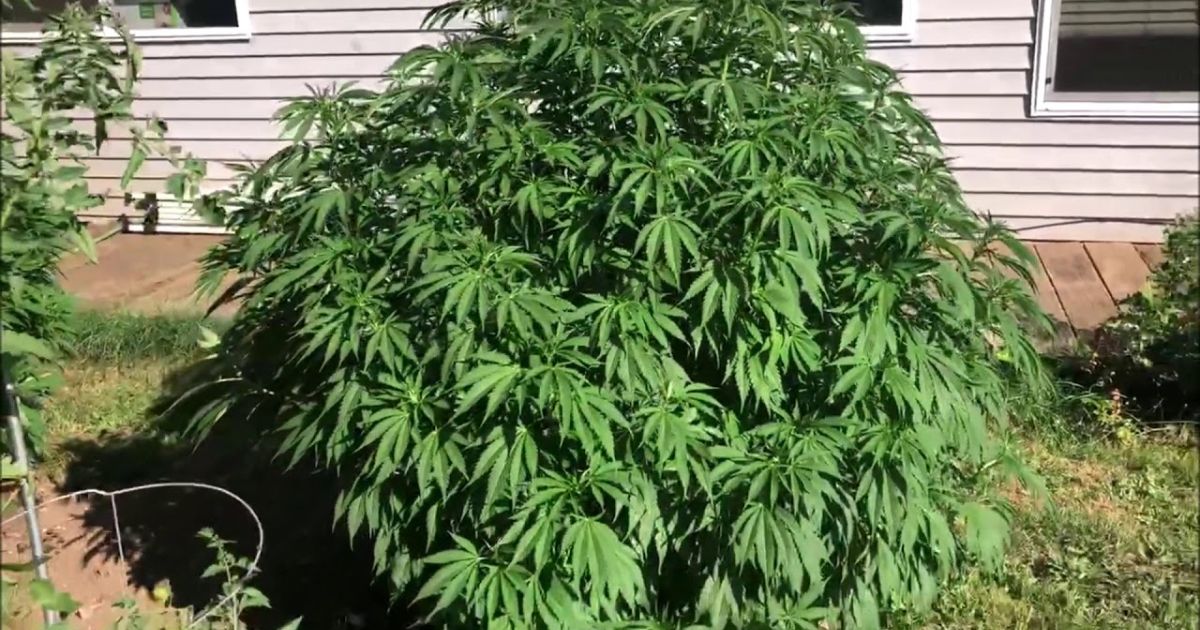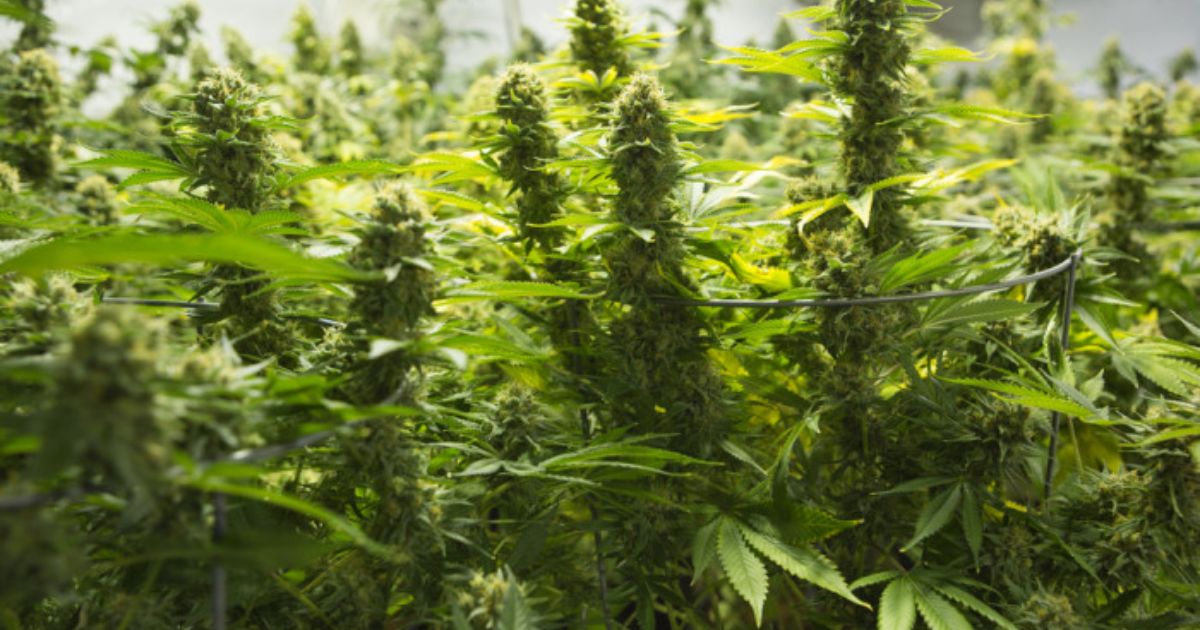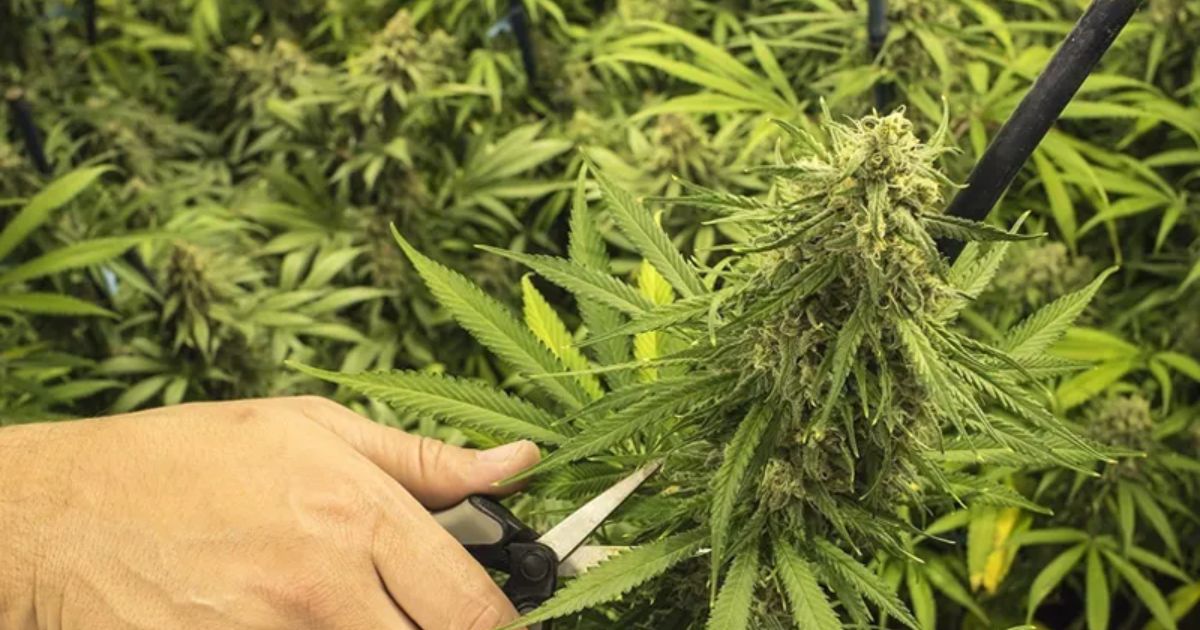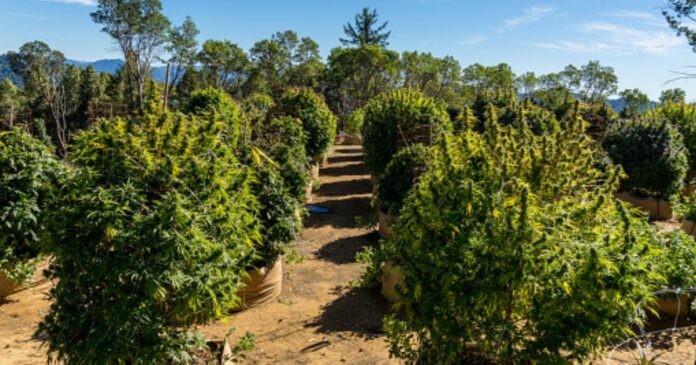Outdoor cannabis cultivation is among the most fulfilling. ways to cultivate your own buds. With natural sunlight, fresh air, and the freedom of space, outdoor plants can reach their full potential and produce larger yields compared to indoor grows. However, successful outdoor cultivation requires careful planning, proper soil, and consistent maintenance to ensure healthy, potent buds.
In this guide, we’ll walk you through everything you need to know about growing cannabis outdoors, from selecting the right strain and preparing your soil to watering, feeding, pest control, and harvesting. By following these steps, how to grow bud outdoors even beginners can achieve strong, thriving plants and high-quality buds.
Choosing the Right Strain
Selecting the right cannabis strain is one of the most important decisions for a successful outdoor grow. The strain determines how your plants will handle the climate, how long they take to flower, and the size and quality of the buds.
Indica vs. Sativa vs. Hybrid
Indica: Shorter, bushier plants with fast flowering times. Ideal for cooler climates or smaller outdoor spaces. Produces dense, relaxing buds.
Sativa: Taller plants with longer flowering times. How Much Water Does a Cannabis Plant Need Best for warm climates and large outdoor areas. Produces uplifting, energizing buds.
Hybrid: A combination of sativa and indica characteristics, giving flexibility in size, flowering time, and effects. Choose based on your grow space and desired results.
Autoflowering vs. Photoperiod Strains

Autoflowering: Flowers automatically regardless of light cycles. Great for beginners and short growing seasons. Usually faster to harvest.
Photoperiod: Requires a change in light cycles to flower. It offers higher yields and more control over growth, but it takes longer and needs careful planning with the seasons.
Consider Your Local Climate
- Check the average temperature, rainfall, and humidity of your area.
- Certain strains are ideal foroutdoor cannabis cultivation because they are more resilient to mildew, pests, and temperature changes.
Desired Effects and Yield
- Select a strain according to the benefits you’re looking for (uplifting, relaxing, or balanced) and the size of buds you hope to harvest.
- Heavier-yielding strains often require more care but reward with larger harvests.
By carefully choosing the right strain, stresscom capsule uses in hindi you set the foundation for a successful outdoor grow, ensuring your plants thrive in your specific environment and produce high-quality buds.
Selecting the Perfect Outdoor Location
Selecting an ideal spot for your outdoor cannabis grow is crucial for healthy plants and high-quality buds. best cannabis strains for outdoors The right spot ensures your plants get enough sunlight, airflow, and protection from pests or unwanted attention.
Sunlight Requirements
- Cannabis plants need 6–8 hours of direct sunlight per day for optimal growth and flowering.
- Morning sunlight is preferable as it helps dry morning dew and How to Identify White Spots on Cannabis Plants reduces mold risk.
- Avoid shaded areas or locations with inconsistent light exposure.
Airflow and Ventilation
- Good airflow prevents mold, mildew, and fungal growth, especially during the flowering stage.
- Avoid locations in tight corners or surrounded by walls without ventilation.
- Natural breezes are ideal, but you can also use small fans in semi-enclosed gardens.
Privacy and Security
- Outdoor cannabis can attract unwanted attention, so choose a discreet location.
- Fencing, natural barriers like hedges, sunlight for cannabis plants or planting among other vegetation can provide camouflage.
- Avoid public view to minimize the risk of theft or legal issues (check local regulations).
Soil Quality and Drainage
- Ensure the location has well-draining soil to prevent waterlogging.
- Slightly elevated areas are better for runoff and reducing root rot.
- If the soil is poor, consider raised beds or containers with nutrient-rich organic soil.
Protection from Harsh Weather
- Avoid areas prone to flooding, heavy winds, or extreme temperature fluctuations.
- If your area experiences strong winds, How Do I Plant Weed Seeds use stakes or trellises to support plants.
- Consider partial shade during extreme heat to prevent leaf burn.
Preparing Soil for Outdoor Buds
Healthy, nutrient-rich soil forms the backbone of a thriving outdoor cannabis garden. Proper soil preparation promotes strong root growth, efficient nutrient absorption, and ultimately, higher yields. Begin by choosing a location with organic soil for cannabis that drains well. Cannabis thrives in slightly loose, aerated soil that holds moisture without becoming soggy.Before planting, check the soil’s pH level and Aim for a score between 6.0 and 7.0 in order to guarantee the best possible absorption of nutrients. You can balance pH naturally: add dolomite lime to increase it or use organic options like vinegar or citric acid to reduce it.

To further improve soil quality, blend in organic materials such as compost, worm castings, and perlite. Compost supplies essential nutrients and beneficial microorganisms, while perlite enhances aeration and drainage. Worm castings improve fertility and promote root health. Perlite increases aeration and drainage, preventing compacted soil and root rot.For heavy-feeding strains, you can also add slow-release organic fertilizers to provide extra nutrients throughout the growth cycle. Lightly turn the soil to blend amendments evenly, creating a fluffy, nutrient-rich medium for your seeds or clones. Properly prepared soil not only supports vigorous growth but also sets the stage for robust, high-quality buds during the flowering stage.
Planting Seeds or Clones Outdoors
Planting correctly is essential for giving your cannabis plants a strong start. Whether you’re starting with seeds or clones, careful handling ensures healthy roots and vigorous growth.
Planting Seeds
- Germinate seeds indoors or in a controlled environment for 1–2 weeks before transplanting outdoors.
- Create small holes in prepared soil, about 1–2 times the seed’s diameter deep.
- Place seeds gently in the holes and cover lightly with soil.
- Water lightly to settle the soil around the seeds, मन्मथ रस टैबलेट के फायदे keeping it moist but not soggy.
- Maintain consistent moisture and monitor sunlight exposure to prevent stress on seedlings.
Transplanting Clones or Seedlings
- Choose healthy clones or young seedlings with strong roots.
- To prevent root cramping, dig holes that are slightly larger than the root ball.
- Carefully place the plant, allowing the roots to stretch out naturally, and then cover with soil.
- To lessen transplant shock, gently press to remove water and air pockets right away.
- Space plants appropriately to allow airflow, sunlight penetration, and growth, typically 2–4 feet apart, depending on the strain.
Proper planting ensures your outdoor cannabis watering establish strong root systems, which is critical for healthy growth, nutrient absorption, and maximizing bud production throughout the season.
Watering and Feeding Outdoor Cannabis Plants
Proper watering and feeding are crucial for healthy outdoor cannabis growth. Roots Organics or other organic soil retains moisture well, but plants still need consistent hydration and nutrients.
Watering Tips
- Water your plants deeply but less often to encourage strong root growth that reaches deeper into the soil for nutrients. Check moisture levels by inserting your finger about 1–2 inches into the soil. Only water when it feels dry at that depth. Avoid light or shallow watering, as it promotes weak root systems and can slow overall plant development.
- Morning watering is ideal to prevent excess humidity and mold, especially during flowering.
Feeding Tips
- Start with the nutrients naturally present in your soil; outdoor cannabis generally doesn’t need extra feeding for the first 2–3 weeks.
- During vegetative growth, use nitrogen-rich organic fertilizers to support strong stems and leaves.
- Switch to phosphorus and potassium supplements during flowering to boost bud development.
- Avoid overfeeding; excess nutrients can cause nutrient burn and stunt growth.
- Organic options like compost teas, worm castings, and bat guano work well for outdoor plants.
Monitoring pest control for outdoor cannabis moisture and nutrient levels regularly ensures your plants stay healthy, strong, and capable of producing large, high-quality buds throughout the growing season.
Pruning, Training, and Plant Maintenance
Pruning and training are essential techniques to ensure outdoor cannabis plants grow healthy, bushy, and productive. Proper plant maintenance increases airflow, light penetration, and overall bud yield.
Pruning
- Remove yellowing, dead, or diseased leaves regularly to conserve the plant’s energy for bud production.
- Trim lower branches that receive little light to increase ventilation and lower the chance of pests and mold.
Training Techniques
- Topping: Cut off the main stem’s tip to encourage bushier growth and multiple main colas.
- Low-Stress Training (LST): Gently bend and tie branches to spread the canopy and allow more light to reach lower bud sites.
- SCROG (Screen of Green): Use a net or screen to spread branches evenly, maximizing light exposure and yield.
Supporting Plants
- Use stakes, trellises, or cages to support heavy branches during flowering.
- Because of this, branches won’t break under the weight of the dense buds.
Regular Monitoring
- Look for indications of disease, pests, or nutritional inadequacies.
- Remove debris and maintain cleanliness around the plants to reduce pest infestations.
Proper pruning, training, and ongoing maintenance help outdoor cannabis plants grow strong, produce larger pruning and training cannabis and stay healthy throughout the season.
Pest and Disease Management
Outdoor cannabis plants are exposed to a variety of pests and diseases that can affect growth and bud quality. To keep plants healthy, routine observation and preventative actions are necessary.
Common Outdoor Pests
- Aphids: Tiny insects that cause yellowing by sucking plant sap from yellow leaves and stunted growth.
- Spider Mites: Tiny pests that create webbing on leaves and cause speckled, damaged foliage.
- Caterpillars and Grasshoppers: Chew on leaves and buds, reducing yield.
- Whiteflies and Thrips: Feed on plant sap and can spread disease.
Natural Pest Control Methods
- Introduce beneficial insects like ladybugs, lacewings, or predatory mites to control pests naturally.
- Use organic sprays such as neem oil, insecticidal soap, or garlic-based solutions.
- Companion planting (e.g., marigolds, basil) can repel certain pests.
Disease Prevention
- Mold and Mildew: Maintain proper airflow, prune excess foliage, and avoid overwatering.
- Root Rot: Ensure well-draining soil and avoid standing water.
- Fungal Infections: Apply organic fungicides when necessary and remove infected plant parts.
Flowering Stage Care
The flowering stage is when outdoor cannabis plants develop buds, making proper care crucial for high-quality harvests. Attention to nutrients, light, airflow, and plant support ensures robust bud development.
Recognizing Flowering
- Outdoor cannabis typically begins flowering as daylight hours decrease, usually in late summer.
- Signs include the appearance of pistils (white hairs) at the nodes and slower vertical growth.
Nutrient Adjustments
- Reduce nitrogen levels, which are more suited for vegetative growth.
- Increase phosphorus and potassium to promote dense, healthy buds.
- Use organic fertilizers, compost teas, Common Mistakes That Stop Buds from Flowering or bat guano for natural nutrient supplementation.
Watering During Flowering
- Continue deep watering, but allow the top soil to dry slightly between sessions.
- Avoid wetting the buds to prevent mold and mildew.
Supporting Buds
- Heavy buds can weigh down branches, risking breakage.
- Use stakes, trellises, or plant ties to support branches and maintain airflow.
Monitoring for Issues

- Check regularly for pests, mold, Best Time to Start Growing Weed Outdoors or nutrient deficiencies.
- Prune small or shaded leaves to improve light penetration and air circulation around the buds.
Proper flowering stage care ensures your outdoor cannabis plants produce large, potent buds with maximum yield and quality.
Conclusion
Growing cannabis buds outdoors can be both rewarding and productive when approached with careful planning and attention. From selecting the right strain and preparing nutrient-rich soil to proper planting, watering, feeding, and pest management, every step plays a role in producing healthy, high-quality buds.
Pruning, training, and supporting plants during the flowering stage ensures better light penetration, airflow, and larger yields. Regular monitoring for pests, diseases, and nutrient deficiencies keeps your garden thriving and prevents potential problems before they affect growth. Finally, harvesting at the right time and curing your buds properly preserves potency, aroma, and flavor.
By following these steps, even beginners can achieve a successful outdoor cannabis grow. With patience, consistency, and proper care, your outdoor cannabis plants can flourish, delivering robust, aromatic, and potent buds season after season.
FAQ
Can I grow cannabis outdoors in a small backyard?
Yes, even a small backyard can support a few plants if you choose compact strains, use containers, and provide sufficient sunlight.
How much sunlight do outdoor cannabis plants need?
Cannabis plants require 6–8 hours of direct sunlight daily for optimal growth and bud production.
When is the best time to plant outdoors?
Plant after the last frost in your area, typically in spring, to give plants enough time to grow and flower during the summer.
How do I protect outdoor cannabis plants from pests naturally?
Use organic methods like neem oil, insecticidal soaps, companion planting, and introducing beneficial insects such as ladybugs or predatory mites.
How do I know when my outdoor buds are ready to harvest?
Look for milky or amber trichomes and pistils that have darkened and curled in. These signs indicate peak potency and readiness for harvest.
Can I reuse outdoor soil for the next growing season?
Yes, but refresh the soil by adding compost, worm castings, or other organic amendments to restore nutrients and improve structure.




